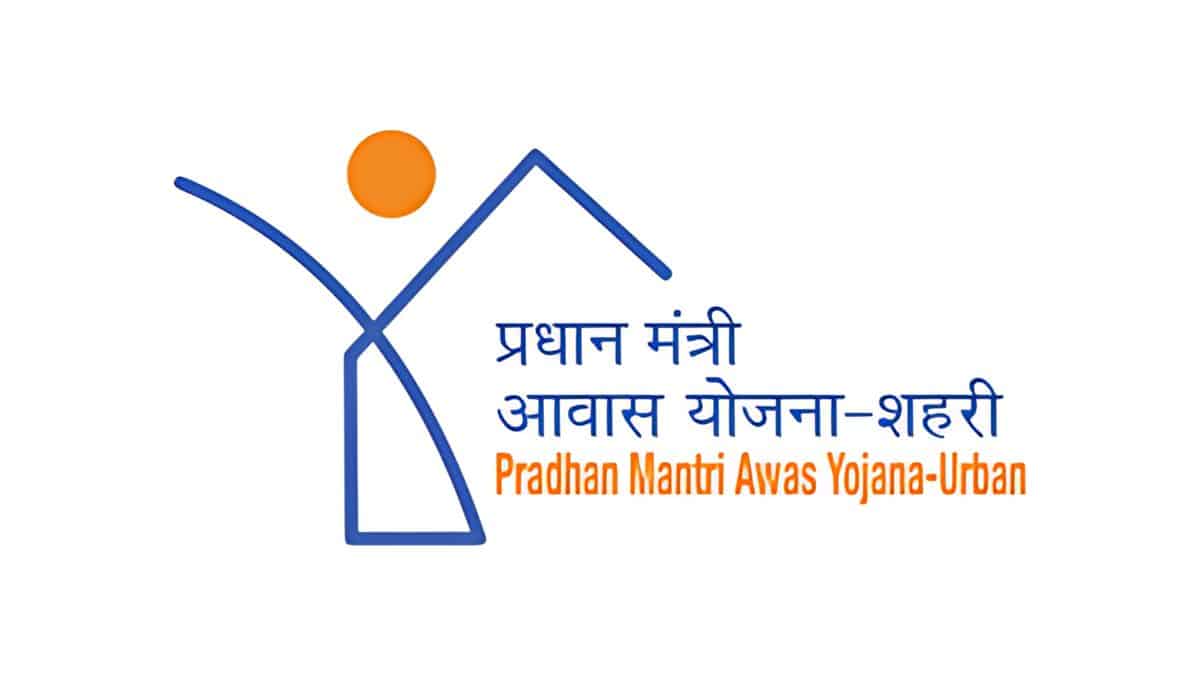HIGHLIGHTS
- Introduction about the Pradhan Mantri Awas Yojana (PMAY).
- This article covers the key components of PMAY & application process for PMAY.
- Success stories and challenges faced by PMAY Implementation.

PMAY is an acronym for the Pradhan Mantri Awas Yojana which is an implementation policy launched by the Indian government in 2015 for offering affordable housing to everyone by the year 2022. It mainly consists of urban and rural sections, providing loans to the economically disadvantaged, lower, and middle-income groups. In that regard, PMAY comprises several elements that include in-situ slum rehabilitation, affordable housing in partnership, and credit-linked subsidy schemes. The program aims to enhance citizens’ functionality by the provision of initial needs and to encourage responsible urbanization.
Table of Contents
Introduction
In October 2015, the Indian government launched the Pradhan Mantri Awas Yojana (PMAY) with an ambition to provide ‘Housing for All’ by the year 2022 to meet shelter requirements for very poor people, low-income families as well as middle-class groups in urban and rural areas. To solve this common problem of poor housing, it has been subsidizing mortgages or lending with aid from private developers which help to build affordable houses through its own resources only. The broad range of PMAY activities focus on slum redevelopment and developing new homes in order to enhance living standards, infrastructure and general urban development.
What is Pradhan Mantri Awas Yojana (PMAY)?
Definition and main objective of PMAY
The Pradhan Mantri Awas Yojana (PMAY) is the government-initiated housing scheme for the economically weaker sections of the society covering low-income and middle-income groups as well as the rural population. PMAY was launched to achieve the goal of ‘Housing for All’ by 2022 and, accordingly, the state targets to provide affordable credit and subsidy to the eligible beneficiaries for the construction of houses, an extension of existing ones or to buy new houses. The scheme aims at providing low-income earners with decent and affordable houses thus enhancing the living standards of the needy and enhancing sustainable urbanization.
Introduction date and initiating government body
PMAY was launched on the 25th of June, 2015 by the Ministry of Housing and Urban Affairs (MoHUA). This policy was launched because of the India scenario, where there was a demand-supply mismatch in the housing sector, and was targeted at achieving the closure of the gap for the economically weaker sections of the society.
Vision for ‘Housing for All’ by 2022
The goal set in the PMAY is to have ‘A house for all’ by the year 2022. This vision is expected to create millions of houses across the nation, and every Indian should get shelter with proper dignity. Some of these aspects include in-situ slum redevelopment, affordable housing in partnership, and credit-linked subsidies and incentives that the program supports and encourages sustainability and inclusiveness of the urban poor in the city’s development.
Key Components of PMAY
PMAY-U (Urban)
The urban segment of PMAY has been titled PMAY-Urban or simply PMAY-U to emphasize the mission of coping with the housing requirement in urban India. The scheme applies to virtually all areas within a city, town, or metropolitan region. Its sub-components include in-situ slum redevelopment I & II, affordable housing in partnership, and the beneficiary-led individual house building/construction or upgrade.
Scope and coverage of urban areas under the scheme
PMAY-U primarily focuses on the urban part of India; its goal is to relocate people living in the slums and provide shelter to those who have none. It also entails private sector development in the construction of new units to enable the provision of affordable houses.
Beneficiaries included: Economically Weaker Section (EWS), Low Income Group (LIG), Middle Income Group (MIG)
Low-income earners are defined as households with an annual income of up to Rs.300000.
- Low Income Group (LIG): The income group of families who fall in the middle class having an annual income of between ₹3 lakh and ₹6 lakh.
- Middle Income Group (MIG): Sub-classified as MIG-I, the households with an income between an amount of six lakh Rupees per annum to twelve lakh Rupees per annum, and MIG-II, the households having per annum income of twelve lakh Rupees to eighteen lakh Rupees.
PMAY-G (Gramin/Rural)
The second arm of PMAY is the rural segment more specifically called PMAY-Gramin or PMAY-G and aims at the habitation of housing the rural population of India. Its objectives are to raise the standards of living in rural areas by facilitating the construction or remodeling of homes for qualifying families.
Focus on rural housing development
The PMAY-G wants to construct pucca houses with the necessary facilities for all the targeted rural households. The scheme aims to resolve issues that pertain to the provision of simple and safe shelter for the poor and the needy in rural areas.
Eligibility criteria for rural households
The houses under PMAY-G are targeted beneficiaries and the target group is identified according to the data obtained from ‘the Socio-Economic and Caste Census (SECC)exercise of 2011’. Higher preferences are provided to the houseless families, families residing in kutcha houses, and other weaker sections of society like Scheduled Castes/Scheduled Tribes, Minorities, and other socially / economically backward classes.
Scheme Details and Features
Financial Assistance and Subsidies
Credit Linked Subsidy Scheme (CLSS) Details:
The CLSS for the guise of PMAY provides interest subvention to the credit seekers for home loans, which have been availed for purchase/ construction/extension/improvement of the house. Its largest facet is CLSS which raises the availability of credit in the housing loan segment, thereby bringing down the apparent cost of credit.
Interest Rate Subsidies Based on Income Group Classification:
- EWS/LIG Category: The loan amount in this segment is given an interest rebate of 6% which caters to the lower income group, LIG, and Economically Weaker Section (EWS). these banks came up with women borrowers 5% for a home loan amount up to ₹ 6 lakh and for men 4% for a home loan amount up to ₹ 6 lakh. This subsidy is only available where the life cycle of the loan does not exceed twenty years.
- MIG-I Category: The Middle Income Group I comes under the credit-driven consumption plan, the annual gross income of this category of people ranges between INR 600,000 to 1,200,000 and their interest rate subvention on loan amounts up to INR 900,000 is 4%.
- MIG-II Category: The category of the borrowers, coming under MIG-II, those whose annual income is ₹12,00,000/- to ₹18,00,000/ -, are given an interest subsidy of 3% on the maximum permissible loan of ₹12,00,000/-.
Maximum Loan Tenure Covered Under Subsidy:
The restricting factor of the CLSS credit-linked subsidy scheme is the maximum loan tenor that can be offered to the women sparkle. Thus, one advantage of having this structure of the working of the trust is that the beneficiaries have the freedom to decide whether the tenure of the manager should be short or long.
Beneficiary Categories & Benefits
EWS/LIG Category:
- Annual Household Income Limit for Eligibility: The monthly EWS income limit will be ₹25000/- and the annual income limit for the households coming under the EWS category will be ₹ 3 lakh only. About the LIG segment, the income should be between three hundred and six thousand rupees.
- Amount of Subsidy Provided: The quantum of subvention permissible for EWS and LIG Beneficiaries is up to ₹ 2/-. 167 lakh on the portion of home loan interest while just up to 17 lakh on the total home loan.
MIG-I & MIG-II Categories:
- Income Limits for MIG-I and MIG-II Categories: For MIG-I it decided for the yearly income in the range of ₹ 600 000 to ₹ 1 200 000 and for MIG- II it is for the income amount within the range of ₹ 1 200 000 to ₹ 1 800 000.
- Differences in Subsidy Amounts Available: Subsidy received by the MIG-I category can go up to ₹2. forty thousand to 01 lakh and the MIG-II category can avail a subsidy up to ₹2. 30 lakh. These differences in the subsidy sums are due to the need for different levels of support at the income band for which relief is sought.
Infrastructure Development Under PMAY
PMAY promotes a range of housing projects to cater to different needs and contexts, ensuring comprehensive coverage:
Slum Rehabilitation:
This component is to redevelop slum areas by converting unsafe structures into suitable pucca houses for the slaves of the slum areas. The emphasis is placed on the efficiency of the land resource and the provision of long-term tenure for the populace.
Affordable Housing in Partnership (AHP):
AHP is a program that entails cooperation between governmental and non-governmental sources in the construction of affordable houses. The scheme motivates the developers to construct homes at cheaper costs because they will be used by many citizens.
Beneficiary-Led Individual House Construction/Enhancement:
This component enables families that qualify to be given cash to build a new home or raise the existing home. It assists individuals who already have a plot of land but they lack funds to put up a structure for shelter.
Application Process for PMAY
Eligibility Criteria
To qualify as a beneficiary under the Pradhan Mantri Awas Yojana (PMAY), applicants must meet certain key criteria:
Income Group Classification:
The applicant has to belong to any of the following income categories, EWS, LIG, MIG-I, or MIG-II.
- EWS: Expenditure: MH-05 up to ₹ 3 lakh of annual household income.
- LIG: Household income between ₹3 lakh to ₹6 lakh in a year.
- MIG-I: Household income of ₹600000 to ₹1200000.
- MIG-II: Household Income between Twelve lakhs and eighteen lakhs per annum.
Family Structure: In this application, the applicant is required to apply as his/her spouse and unmarried children. The applicant and similarly any family member should not own any pucca house in any part of India.
Location Criteria: As for the PMAY-U, the applicant shall belong to the urban area while the PMAY-G applicant should be from the rural area.
Age Limit: In general, the applicants have to be of a certain age, preferably an adult person, as per the age of 18 years and above. In the case of documents, they have age restrictions, but the maximum age limit depends on the lending institution.
Documentation Required for Application
The following documents are typically required to apply for PMAY:
Identity Proof:
One of the photo ID proofs such as the Aadhar card, the PAN card, voter ID card, or the passport.
Address Proof:
If not an Aadhaar card, then either utility bills have to be produced, or a ration card.
Income Proof:
They include pay slips, income proof, Income Tax returns, and bank statements, among other things.
Proof of Property Ownership (if applicable):
Title deeds are also known as papers of property or documents of property or deed to land.
Proof of Caste (if applicable):
The candidates who belong to SC/ST/OBC categories have to attach a caste certificate which should include the caste certificate issued by the tahsildar and an attested photocopy of the same.
Other Documents:
Two latest photographs of the applicant in passport size, a canceled cheque of account, which they wish to operate in the future for the monthly deposit along with an affidavit saying that the applicant or any of the family members do not own a pucca house.
Steps to Apply
Online Application Portal Navigation:
- Visit the Official PMAY Website: The PMAY online portal is through the website pmaymis.gov.in and one can also do a PMAY online application but this has to be under the supervision of a PMAY official. gov. in.
- Select the Relevant Option: It goes into either the “For Slum Dwellers” category or into the “Benefits under 3 Components” category.
- Enter Aadhaar Number: This has the provision of Aadhaar verification to ensure the identification is correct such as the provision of identification for voting. You shall have to enter your Aadhaar number and balance.
Filling Up Application Forms Correctly
- Fill in Personal Details: Details that one should provide include name, age, gender, family, details, and phone number.
- Provide Income and Employment Details: Join information about your pay, supply confirm the job you match in present and the celebrating beneath which you allied (EWS, LIG, MIG-I OR MIG-II).
- Property Details: Provide information on own or referred real estate, which requires financial help in the form of a loan.
- Loan Details (if applicable): It is preferable to mention the loan limit and the bank specifics if you are using the Credit Linked Subsidy Scheme (CLSS).
- Review and Confirm: Make sure to review all the entries as client details should be correct.
Submission Guidelines:
- Submit the Application: After completing such a form, one should electronically send the form. Consequently, an application number will be generated and assigned to the system, for future use.
- Download and Print: Take a printout of the application for your reference.
- Follow-Up: They can track the status of their application from the PMAY portal from the application number given to them after they have submitted their application.
- Additional Steps (if applicable): According to the category and the amount of financial help required, the applicant may be required to go to a CSC or the bank to complete the procedures.
Success Stories and Statistics
Achievements Till Date
Pradhan Mantri Awas Yojana (PMAY) commenced in 2015 for affordable housing for the massive population of India. Multiple significant things regarding the scheme have happened on the urban side and the rural side as well, which provides testimony about the availability of the great things that have been done in the housing sector in the country.
Number of Houses Sanctioned/Completed (Urban):
At present, according to the latest figures, PMAY-Urban (PMAY-U) unveiled over 1. Build one crore houses including residential and commercial and till now more than fifty lakh houses have been built and delivered to the poor lift patent. The urban part has considered several sub-schemes like the in-situ rehabilitation of slum settlements, affordable housing for SHG/joint-venture, and the construction of individual houses.
Number of Houses Sanctioned/Completed (Rural):
Under PMAY-Gramin which is the rural version of the PMAY more than 1 crore beneficiaries have been identified in the country. Responsible leader of India, Mr. Narendra Modi stated that in the stipulated time, two crore houses have been sanctioned. From the above, the rural clients have benefited, and ninety lakh houses have been constructed and finalized for distribution. PRERY-G deals with the construction of pucca homes along with fully equipped facilities for the community living in kaccha/minimal shelters in the villages.
Case Studies/Examples
Real-life Stories from Beneficiaries:
Urban Success Story:
Sarla Devi’s Journey to Homeownership: Sarla Devi, a woman from one of the Dehli slums, was homeless for a few years in substandard housing conditions. Thanks to PMAY-U, she can get a loan for the shelter makeover according to the in-situ slum redevelopment scheme. Sarla already has a tidy, well-kept shelter with modest necessities, thus enhancing her family’s quality of life.
Rural Success Story:
Ramu’s New Home in Bihar: Ramu is a daily wage laborer from a village in Bihar, he has a very bad and dilapidated mud house which gets flooded during the rainy season. He availed housing finance under the PMAY-G which enabled him to construct a robust green brick house. Not only has the new home ensured the families’ safety but it has also enhanced the social class of the man’s family. It improved their living conditions and gave them hope and the feelings that are usually related to dignity.
Challenges Faced by PMAY Implementation
Common hurdles in execution at ground level
Land Availability and Acquisition:
One of the biggest problems has been the issue of land for development, especially in the growing urban areas. These challenges usually involve land acquisition where the processes take a very long time and are complicated thus slowing down the implementation of a project.
Financial Constraints and Delays:
Even with the subsidies and or financial support most of the intended beneficiaries encounter challenges in accessing loans either because of the stringent set eligibility criteria or lack of knowledge of the best practices. However, the authors noted that there can be a tendency for a slow disbursement of funds which affects construction processes.
Bureaucratic Hurdles and Red Tape:
Some of the common and recurrent factors that characterize organizations are that the approval of projects and the subsequent disbursement of funds and other related activities often take a long time due to well-developed bureaucratic procedures.
Quality Control and Infrastructure Issues:
Sustaining the quality of construction and infrastructures is always an issue, especially in remote or rural areas, where the availability of quality materials and human resources with quality workmanship is a problem. Others are social infrastructure where shortage of such basics as water and electricity distort the quality of housing.
Awareness and Accessibility:
This results in beneficiaries who are eligible not being able to access the scheme at all due to ignorance of the benefits of the scheme or the process that one has to undertake to be affiliated with that scheme. Also, the problem of the absence of proper internet resources for application submission remains an obstacle for individuals residing in rural and remote settings.
Government initiatives to overcome these challenges
Simplification of Procedures:
Both have been an active concern to try and bureaucratize the measures administrative and barderomize the application and approval. Some actions are being made to deliver clearances for the project faster and the circulation of funds.
Financial Inclusion and Literacy:
Due to this problem, the government has partnered with the financial institutions of its countries to relax the measures it takes before disbursement of the loans as well as the services of financial advice to its clients. Some of them include publicity programs and seminars for passing information about the finances of the scheme to the relevant people.
Land Policy Reforms:
The policy introduced new changes in the following authorities of land policies for facilitating the acquisition and release of land for affordable house building by the government of the country. All these reforms have the general aim of achieving the outcomes that the land in the respective countries becomes more available and cheaper to use for development.
Quality Assurance Mechanisms:
Sanitarian actions have been introduced and realized more severely, where it is required to monitor the compliance and the territories of construction. Similarly, the government is also encouraging the use of ecologically friendly as well as durable building materials in the construction of the units.
Awareness and Outreach Programs:
In the process of achieving this, the government has increased its reach through other mediums in the following domains; online, local government, and community halls. They also have plans to raise awareness of the population about PMAY, and for what it was created, as well as how the population of the rural and other unfavorable areas can qualify for the project.
Public-Private Partnerships (PPPs):
To foster private sector initiatives, the government has strategized on the public-private partnership in the construction of low-income houses. This integration is the goal of enhancing the consequences of a project alongside the rate of construction work.
Conclusion:
The Pradhan Mantri Awas Yojana (PMAY) holds a significant position in moving ahead regarding the country’s vision of housing for all. Paying attention to the housing demand at the BOP, PMAY formulates subsidies and financial support that help the economically weaker section, low-income and the new members of the middle-income group enhance their living standards tremendously.
Although there are problems associated with the implementation of the strategy, the government actively works on preventive measures and further improvement of the processes and outreach. Despite moving further to achieve the 2022 goal, PMAY has been an indispensable tool in achieving ‘Housing for All’ to provide a better fate of living for every citizen of this country.
FAQs
Who is the beneficiary of Pradhan Mantri Awas Yojana?
It is identified as Pradhan Mantri Awas Yojana Eligibility.
The following can apply for PMAY – Urban: Under 3 components: The below-poverty line people, which also come under the Low Income Group (LIG), Middle-Income Groups (MIG), and EWS defined as the beneficiary of the Housing for All Scheme.
Who launched PMAY?
For a long time, the Indian government has been working towards the housing demand of the rural and urban poor which in near past have launched the Pradhan Mantri Awaas Yojana in June 2015 by Prime Minister Narendra Modi intending to offer affordable housing.


